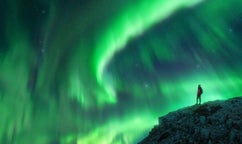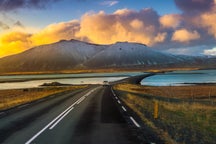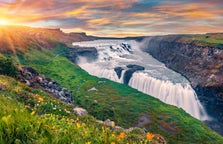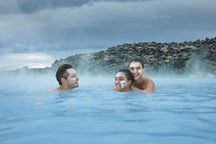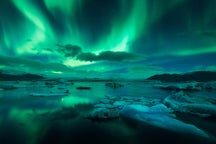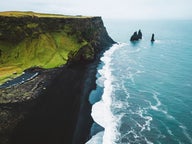There are an infinite number of ways to explore Iceland – from hotel stays to guesthouses, campgrounds and more. Among the many beauties this country has to offer is the opportunity to create your own adventure -- to go off the beaten path and get lost in wonder.
As a camper, I knew I wanted to be out in nature traversing the iconic open landscapes that Iceland is known for. I wanted to venture past the city limits and truly immerse myself in the country. Crowded tour buses and jam-packed day trips are quite often my biggest turn off. Give me a hot tea and a good view and I’m all yours.
The Ring Road is the main roadway encircling a majority of the Nordic country – with the omission of the west fjords. It is your gateway to Iceland and a route you will never forget. While it may be possible to finish the drive in under 2 days (with no sleep and no stops), I’d recommend a much more comfortable journey of at least 8 days.
Here is how we set up our trip :
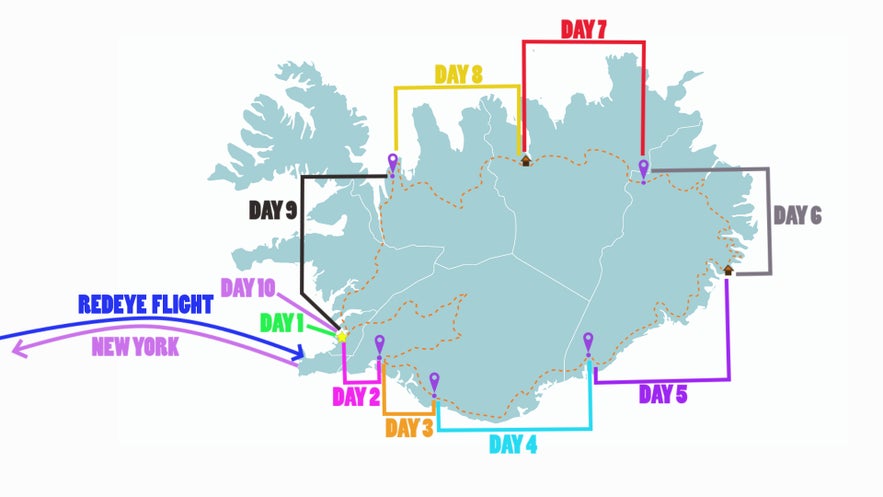
Want to view/download my full map (with over 100+ pinned locations)? Click here.
These are some things to consider when planning your Ring Road trip:
When to go to Iceland
The winter months (November – March) are filled with shorter days and colder nights. With little tourist traffic, it is not uncommon to find discounted rates on everything from hotels to airlines. As a winter traveler, your northern lights exposure is at its best. For campers, however, this is a season of risk. Be mindful of snow-related road closures, vehicle capabilities (4WD recommended) and campground access (many – but, not all -- campgrounds are closed for the duration of this season).
The summer (July – August) is peak tourist season and consequently, the most expensive season. Advanced reservations for everything is encouraged. Visitors can maximize the long, sunny days by indulging in more excursions. Just know, that you won’t be alone in doing so. Campgrounds are all open and off-roading opportunities await (look up Iceland F-roads). You won’t have a chance to see the northern lights, but puffin sightings are a potential.
The shoulder seasons (April – May and September – October) bring in less crowds and often offer welcomed discounts. While Icelandic weather is unpredictable all year round, the fall months are historically the rainiest. The spring months are the least rainy. Depending on how far into or out of the shoulder season you are, sunlight typically mimics a normal 12-hour day. This can provide you with enough darkness to possibly catch the northern lights, as I observed several times in early April. I also experienced blizzard-like conditions and closed campgrounds, so those are a few things to look out for.

How many days you will be traveling
If you have less than 4 days to explore Iceland, I would shy away from pursuing a trip around Ring Road. Personally, I would regret having rushed past so many sites just to maintain the strict timeline and catch my flight home. There are plenty of opportunities, however, to still enjoy Iceland in your short stay AND you can still camp. Based on my experience, I would recommend a day in Reykjavik, followed by 3 nights camping near the Golden Circle and along Iceland’s South Coast to the seaside village of Vik.
If you have more than 4 days, you have certainly afforded yourself the time to travel Ring Road. While I would strongly encourage 8 days to fully take it in, I have seen plenty of 5-day trip itineraries with stellar reviews. Once you pass the 5-day mark, you will have complete flexibility in making your vacation all that you want it to be.
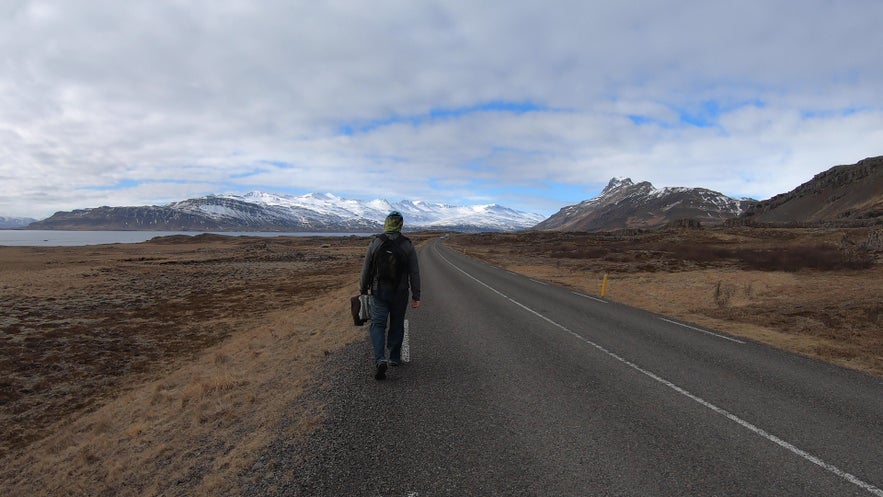
Accommodations
This may seem like an obvious category to us campers, but the truth is, there are a number of options for accommodations. Do you want to rent a car and tent? Do you want a full motorhome? Are you happy with a campervan? Should you break up the road trip with some hotels?
This category is highly customizable and an opportunity for you to gauge what would make you the most comfortable and what could provide the best experience. For us (my boyfriend and I), we chose to mix and match a bit. On our 10 day trip, we spent 2 nights in hotels, 5 nights at campgrounds and 2 nights at Airbnbs. The hotels bookended our trip, while the Airbnbs greeted us somewhere in the middle – both serving as welcomed retreats to stretch our legs.
Hotels and guesthouses should be booked in advance, regardless of the season, while campground reservations are not absolutely necessary. In fact, we did not book a single campground in advance for our April trip. As mentioned above, however, campgrounds in the winter and shoulder seasons are mostly closed. While we did not make reservations, we had to do a lot of research leading up to the trip to know which campsites would be open. Even then, it was hit or miss.
There are many hotels, guesthouses and camper companies to choose from. So much so, that it was quite difficult to make a confident decision when booking. We chose two Hilton hotels based on my status as a Hilton Honors member. The Hilton Reykjavik Nordica was adequate, though the Canopy by Hilton Reykjavik was far superior. The location of the latter, alone, put us in the heart of the city and came with up-to-date amenities and style.
Our campervan was booked through Cozy Campers — a decision we couldn’t have been happier with. Cozy Campers is a family run business and you can tell a lot of heart and soul went into the design of their campervan and their customer service. We booked a 4x4 Cozy 3 XL and it served as the perfect little home on wheels and a surprising beast on our off-roading (and snowy) adventures.
Our two Airbnbs were booked right on the website with a goal in mind to have each location serve as a marker point for our trip. While our campground stays were decided on the fly (based on where we ended up each day) we wanted two solid bookings in the middle of the trip to keep us on target for making it back to Reykjavik at the end to catch our flight home. They were essentially our check points.
Bragdavellir Cottages was a stunning property in the east fjords comprised of several little cottages, a small restaurant and endless hiking opportunities. I spent our morning there exploring the nearby waterfall, hanging out with wild reindeer and meeting property horses. When I reflect back on our Icelandic adventure, I often think about this location. Our second Airbnb was in the quaint city of Akureyri. It was a comfortable little property with no great views, but a stellar proximity to local shops and restaurants.
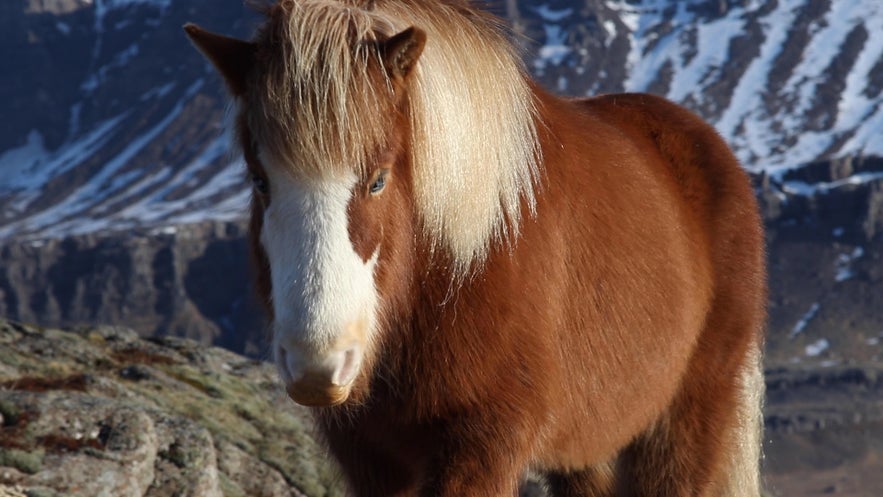
Gas and Food
As you venture far from Reykjavík, it becomes much more desolate. It is not uncommon to drive for an hour or two at a time without passing through a single town along Ring Road. Our rule of thumb was to never let our gas tank get below 50% and we managed to stick to this plan the entire trip — no problem! After long spans of nothing but extraordinary vistas, we would inevitably stumble upon a tiny town with at least one gas pump. Keep in mind that these pumps may be unmanned and a debit card will be needed. I say debit card specifically, because Iceland gas stations require you to entire a pin number and most credit cards do not have pin numbers.
As for food, camping in a campervan afforded us the luxury of having a mini-fridge. Before we began our road trip, our first stop was the Kronan grocery story. You can also try Bonus. We stocked up on oatmeal, ramen, Icelandic chocolate, Skyr, a few meats to grill and a hefty supply of snacks. Our fridge could fit about 3 days worth of meals and by the time we needed more food, we would come across another Kronan or Bonus along Ring Road. They were few and far between, but the larger cities like Selfoss, Egilsstadir and Akureyri all had grocery stores. As for water, Iceland offers some of the freshest water in the world. Don't pay for bottled water when you can just refill a large jug or two at the local gas station.
If budget allows, I would also encourage you to venture out and visit local restaurants along your route. Your patronage will only help the Icelandic economy and you'll have the opportunity to enjoy an authentic meal. Ramen doesn't quite provide the same excitement.
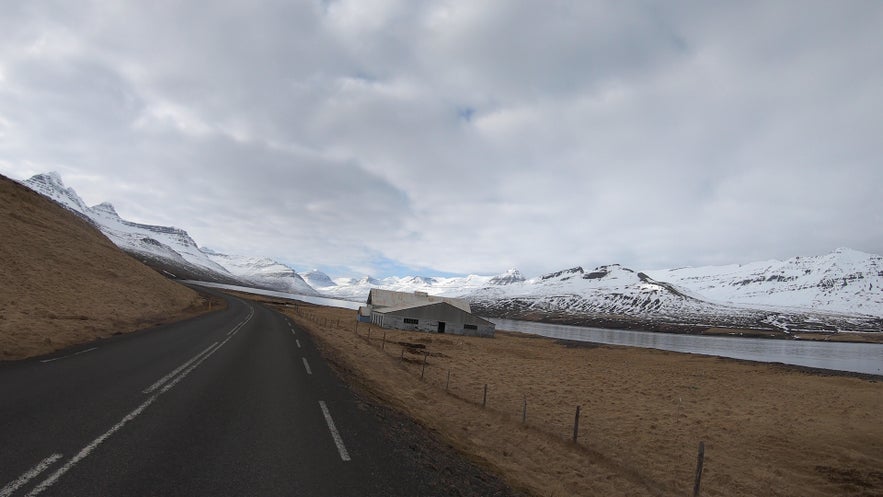
Hot pots & Community Pools
If you haven’t heard of a hot pot, you’re going to want to know all about them before visiting Iceland. Hot pots are tubs or bodies of water naturally heated by the earth. These dwellings are scattered all around Iceland and are accessible to anyone that can find them. Fortunately for us, we had an app that pointed us in the right direction (App: HotPotIceland). These hot pots were perfect getaways from our van and truly the epitome of relaxation.
On a bit of a grander scale are the community pools. Nearly every community we passed had a pool and they appeared to be all the rage among locals. The community pools are structured complexes where you pay a fee to enjoy the warm water. More often than not, you won't have the place to yourself, but you can enjoy all that the facility has to offer. If you've been staying at a campsite with somewhat dicey washrooms, visit a community pool and take advantage of clean showers and maintained bathrooms.
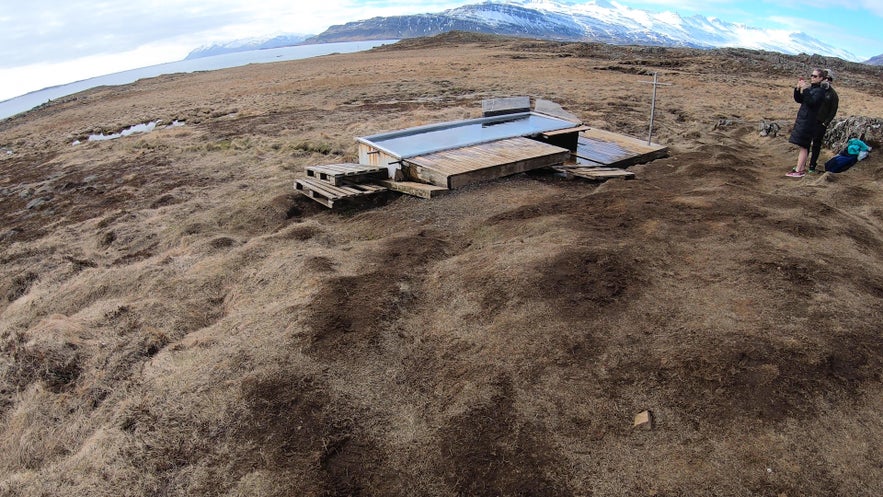
Extra tidbits for your consideration
While Iceland still accepts paper cash, they much prefer credit cards / debit cards -- even around the country in the middle of nowhere.
Tipping is not a big thing in this country. As an American, that was a departure from my typical mindset. We refrained from tipping at restaurants, but still tipped (roughly 20%) for private guided tours such as ice climbing and snowmobiling.
In Reykjavik, nearly everyone speaks English. As a traveler, I always try to learn a bit of the language for my destination, but the Icelandic language is quite difficult for me, so it was much appreciated that we could converse in English. English was a bit less prevalent the further along we traveled on Ring Road. For that, I used the app Google Translate to help facilitate discussions when needed.
If you are planning to camp, please know that by law, you are only allowed to camp at designated campsites. It is illegal to camp anywhere else without the explicit permission from a private property owner. This means that you can not just pull over anywhere on the side of the road to stay the night without consequence.
Respect the land. Iceland is so deeply tied to nature -- and understandably so! As visitors, it is important to enjoy the pristine landscapes without leaving a footprint. Enjoy it for what it is and leave it for the next to come.








